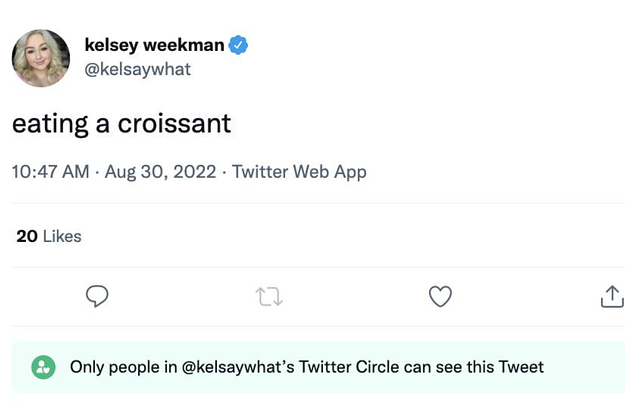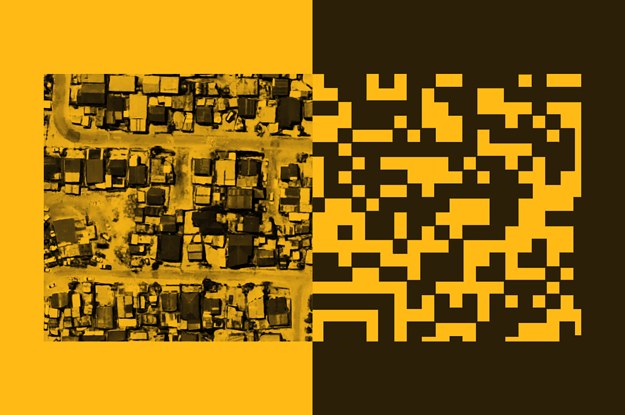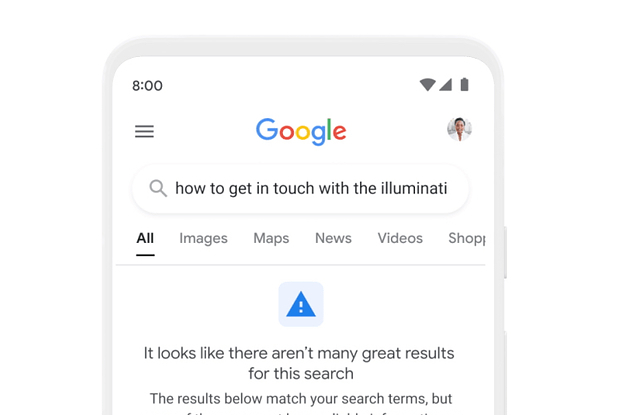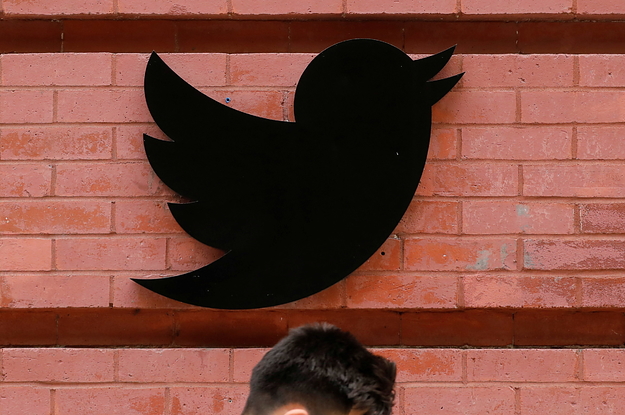
Welcome to a typical day in your life on TikTok, where everyone is at brunch except for you.

via BuzzFeed News https://ift.tt/eZIV3R5






Forget scrolling through your phone’s endless photo gallery to find something. Here’s a pro trick to locate any photo you want in 30 seconds, or less.
If your photos aren’t backed up, this is your friendly reminder to do it now. You’d be heartbroken should you lost all those memories. Tap or click for the foolproof steps to make the job a lot easier.
When it comes to the old photos you have lying around, you don’t need to pay for an expensive digitizing service or buy a scanner. You can use an app to get the job done. Here are three great options.
PRIVACY TIP: 5 WAYS YOU'RE BEING TRACKED YOU MUST STOP RIGHT NOW
PhotoScan by Google Photos
Google’s PhotoScan is a free app for iOS and Android that scans your photos multiple times, then stitches all the images together to remove glare and improve the quality of the final image. The app works on matte, gloss prints, and photos inside or outside albums.
Tech how-to: Colorize old black-and-white family photos
Here’s how it works: Snap one photo, then take four additional shots according to the app’s instructions. PhotoScan uses an algorithm to detect and crop the photo, automatically detect the edge, correct the rotation, and correct the perspective to show a frontal view.
Open the PhotoScan app and hold your phone above a photo.
Tap the capture button to take pictures, which will save to your device.
Move your phone around to get the circle over each of the four dots.
After the photo is processed, tap the photo thumbnail.
Select a photo to rotate, adjust the corners or delete.
You can then use Google Photos to store and organize your scans. From there, you can edit your images and share them with others.
Tap or click here to download for iPhone.
Tap or click here to download for Android.
Microsoft Lens
Microsoft Lens (formerly Office Lens) is a free business-oriented scanning app that works with documents, whiteboards, business cards, receipts, menus, signs, handwritten memos, or anything else containing text you want to import to your phone. It certainly beats typing everything by hand.
RELATED: How to turn your quick video clips into memories to share with family and friends
The app also works with photos and automatically corrects things like shadows and odd angles.
Microsoft Lens makes it easy to digitize photos in a few steps:
Open Microsoft Lens and swipe left or right near the bottom of the screen and select Photo.
Point your camera at the photo you want to capture, ensuring it is in the frame. You can turn the flash on and off before tapping the camera button to snap the picture.
Now you can Add a new image to your scan, apply a Filter to the image, Crop, Rotate, or Delete the image. You can also annotate it or add text.
Tap Done when you’re finished.
You can save pictures in your phone’s gallery.
Tap or click here to download for iPhone.
Tap or click here to download for Android.
Upgrade your photos: 3 affordable lens attachments to take better photos
A solid option for negatives: FilmBox by Photomyne
FilmBox is a scanner app for iOS and Android that digitizes your camera film negatives using just your smartphone.
You can view, capture, and save film negatives, making browsing, organizing, and sharing easier. FilmBox inverts the image’s negative colors into positive, then enhances the overall appearance.
Note: The first few scans are free, but you’ll have to pay for a subscription if you want to capture more. A two-year plan costs $39.99 and gives unlimited access to the app and its features.
All you need is a light source and your smartphone to get started:
Place your negatives in a dark or low-lit room. Open the FilmBox app.
The only light source should be a backlight, which you can get by opening a white screen on a tablet or computer. You can also use the photomyne.com/backlight link provided in the app. Set your backlight device to the highest brightness setting.
Hold your film strip vertically in front of the light and keep it steady. Make sure the perforated borders are included in the scanning screen.
Hold your negatives about two inches away from the light source and tap the app’s capture button.
Your image will be saved as a digital photo in the app.
4 QUICK CYBERSECURITY STEPS EVERYONE MUST TAKE RIGHT NOW
Tap or click here to download for iPhone.
Tap or click here to download for Android.
Keep your tech-know going
My popular podcast is called "Kim Komando Today." It’s a solid 30 minutes of tech news, tips, and callers with tech questions like you from all over the country. Search for it wherever you get your podcasts. For your convenience, hit the link below for a recent episode.
PODCAST PICK: Smart headlights, ads on Apple Maps, find hidden trackers
Do you use navigation apps when you drive? Buckle up. You might have to deal with ads cluttering the screen. Also, Ford wants to make night driving easier with its smart headlights. Plus, is someone watching you with a hidden tracker? Here are the signs you need to watch out for.
Find my podcast "Kim Komando Today" on Apple, Google Podcasts, Spotify or your favorite podcast player.
Just search for my last name, "Komando."
What digital lifestyle questions do you have? Call Kim’s national radio show and tap or click here to find it on your local radio station.
You can listen to or watch The Kim Komando Show on your phone, tablet, television or computer. Or tap or click here for Kim’s free podcasts.
Copyright 2022, WestStar Multimedia Entertainment. All rights reserved. As an Amazon Associate, I earn a small commission from qualifying purchases. I only recommend products I believe in.
Learn about all the latest technology on The Kim Komando Show, the nation's largest weekend radio talk show. Kim takes calls and dispenses advice on today's digital lifestyle, from smartphones and tablets to online privacy and data hacks.
For her daily tips, free newsletters and more, visit her website at Komando.com






When my son went to preschool at age four, I taught him to use a cell phone for kids that I tossed in his backpack. It had no apps and four numbers: Mom, Dad, Grandma, and 911. This time was way before school shootings were in the headlines.
Many parents are shocked when they find out what their child is doing on their phones, tablets, or computers. Don’t be that parent. Get proactive. Much like you have the sex talk with your kids, have the digital life talk. Tap or click for my free tech contract parents and kids can use to set boundaries.
A new report shows there were 193 incidents of gunfire on school grounds during the 2021-2022 school year. I can’t imagine the stress of dropping your child off at school now and truly questioning whether they will be safe.
That’s why I want to help any parent or guardian with school-age children use the right tech. For your convenience, I have linked to some helpful products you can check out and order on Amazon. I earn a small commission from qualifying purchases, but I assure you, my recommendations are always independent.
4 QUICK CYBERSECURITY STEPS EVERYONE MUST TAKE RIGHT NOW
Here’s what I would do
Many schools don't let kids have cell phones in the classroom until they reach a certain age. Smartwatches can be a better safety tool than cell phones. Here’s the reason why.
In an emergency, kids can tap a few buttons on a watch. This movement is more inconspicuous than making a phone call, especially when the watch is hidden under long sleeves.
For little kids, I like T-Mobile’s SyncUP KIDS Watch. It makes calls and texts to approved contacts, but it also has real-time location tracking, virtual fences and one button to press to call for help or 911.
An Apple Watch is excellent for older kids who use an iPhone. Remember, this is sized for adult wrists, so it's not well suited for young kids. The Apple Watch SE is a good deal compared to the much more expensive newer models.
Take the time to teach your child how to use any smartwatch. To use Apple’s Emergency SOS feature, press and hold the side button until the Emergency SOS slider appears. Dragging the slider calls emergency services and sends your child’s current location to any emergency contacts. Here are the steps for setting up emergency contacts.
For older kids and teens with an Android phone, the Samsung Galaxy Watch includes an SOS feature that sends a message to designated emergency contacts, along with location information. You can adjust the settings so that this is accessible by pressing the Home key three times. Here’s how.
Skip Fitbits since they do not have an emergency or SOS feature.
RELATED: How to set up parental controls on all your kid’s devices: Windows, Apple, Android
Put a tracker on them or in their backpack, too
A tracking device is another way to keep an eye on where your kid is throughout the day. In an emergency, it can help you locate them, too.
If you have an iPhone, use an AirTag. I have them all over the place: On my luggage, my dog’s collar, my car, my purse, you name it. Here are more smart uses for the inexpensive trackers.
You can slip one into your child’s backpack, but it may not always be on them. You do what feels suitable for your child. I like these accessories that always keep it right on their body:
Kids can hide this silicon clip with a tracker in a pocket or waistband.
For very young kids, a necklace may be more comfortable. Here’s a cute two-pack that holds an AirTag securely in place.
This keychain holder is a nice option for teenagers and older kids, but remember it may get left in a backpack.
For Android users, you can use a Tile tracker or a Samsung Galaxy SmartTag+.
Apps for your child’s phone
If your child has a phone and is allowed to bring it to school, there are ways they can quickly and silently contact you.
Life360 offers location tracking and a way to ask for help without saying a word. The free version includes the SOS Help Alert. If your child opens the app and taps or holds the SOS button, an alert with their location is sent to the emergency contacts you set up ahead of time.
Paid options start at $14.99 a month and add many more features.
Noonlight is another solid option. Your child can press a button to call for help silently. There is an extra step, so this one is best used with older children and teens.
With Noonlight, open the app and hold down on the button that reads "Hold until safe." If there is no emergency, release the button and enter a four-digit pin to cancel. Releasing the button without entering a pin will notify police of an emergency.
The Safety Network feature is excellent, too. You can request a check-in with your child; if they don't respond, the app will help you trace them. Note: This works only with iPhones. The safety button works with iPhone and Android.
Know your options: 9 safety apps you'll want on hand in an emergency
Practice at home
It pains me to say this, but you should also have safety drills at home so your kids know what to do if they need to. Teach them how to use their smartwatch or phone apps to contact you in an emergency.
Discuss with your child when and where it’s appropriate to pull out their phone — and what constitutes an emergency. This is especially important with young kids.
PRIVACY TIP: 5 WAYS YOU'RE BEING TRACKED YOU MUST STOP RIGHT NOW
Keep your tech-know going
My popular podcast is called "Kim Komando Today." It’s a solid 30 minutes of tech news, tips, and callers with tech questions like you from all over the country. Search for it wherever you get your podcasts. For your convenience, hit the link below for a recent episode.
PODCAST PICK: Smart headlights, ads on Apple Maps, find hidden trackers
Do you use navigation apps when you drive? Buckle up. You might have to deal with ads cluttering the screen. Also, Ford wants to make night driving easier with its smart headlights. Plus, is someone watching you with a hidden tracker? Here are the signs you need to watch out for.
Find my podcast "Kim Komando Today" on Apple, Google Podcasts, Spotify or your favorite podcast player.
Just search for my last name, "Komando."
What digital lifestyle questions do you have? Call Kim’s national radio show and tap or click here to find it on your local radio station.
You can listen to or watch The Kim Komando Show on your phone, tablet, television or computer. Or tap or click here for Kim’s free podcasts.
Copyright 2022, WestStar Multimedia Entertainment. All rights reserved. As an Amazon Associate, I earn a small commission from qualifying purchases. I only recommend products I believe in.
Learn about all the latest technology on The Kim Komando Show, the nation's largest weekend radio talk show. Kim takes calls and dispenses advice on today's digital lifestyle, from smartphones and tablets to online privacy and data hacks.
For her daily tips, free newsletters and more, visit her website at Komando.com



Your router is responsible for sending Wi-Fi signals to your phone, laptop, smart TV, security cameras and more. It has a big job.
Sometimes it’s the reason your internet connection is spotty, but not always. Tap or click for my guide to troubleshooting your bad Wi-Fi.
Your router plays a crucial role in network security, too. It’s bad news should someone hack into your router. Tap or click for a free check to see if yours has been compromised.
There’s a limit to what your old router can do, no matter how well you take care of it. Do you need a new router? Read on to find out and get help selecting the right one for your home.
4 QUICK CYBERSECURITY STEPS EVERYONE MUST TAKE RIGHT NOW
1. Your old router is easier to hack
Your router may be doing a fine job keeping you connected to the internet, but is it keeping you safe? The latest security standard is WPA-3, released back in 2018. Any router that uses WPA-2 encryption needs to be replaced.
Run an encryption check on your router. Go to your router’s admin menu. Under the Wireless or Security menu, you’ll see the encryption status. Need help? Tap or click for the steps to do this on my site.
If your router is not WPA3 compatible, WPA2-PSK AES is the next most secure option. It’s also a sign you need to get a new router. I’ll tell you how to select the best router below.
More tech tips to your inbox: Try my free emails packed with tech know-how.
2. You’re missing out
When buying a router, you might as well future-proof your network. More and more devices support Wi-Fi 6, but that doesn’t mean a thing if your router doesn’t.
Wi-Fi 6 significantly improves two critical categories: speed and range.
Homes with a lot of connected technology — phones, computers, smart TVs, printers, smart speakers, and smart home devices — put a definite strain on a network. Wi-Fi 6 routers can easily handle 50 devices or more.
There’s something even better than Wi-Fi 6, though not many devices can utilize it yet. Wi-Fi 6 uses the 2.4 GHz and 5 GHz bands, while Wi-Fi 6e operates on the 6 GHz band. You’ll find this tech built into many mesh networks.
Location, location, location: Where to put your router for better speeds
3. Your signal is weak in certain spots
Your home should have a consistent, speedy network. A single router works fine for small spaces, but what about multiple rooms and floors?
Mesh networks are more popular and affordable than ever. Rather than relying on one router, a mesh network adds satellite modules around your home, blanketing the entire area with coverage.
These systems usually come in sets of two or more units that work together. As far as your gadgets are concerned, the Wi-Fi mesh is one big continuous network that eliminates poor coverage, dead spots, and buffering.
Internet out? Before you unplug everything, read this: The only way tech pros reboot their routers.
4. Your devices need more juice
How old is your router? Routers that only support 2.4 GHz frequencies are dinosaurs.
Single-band routers only utilize the 2.4 GHz band and one wireless signal.
Dual-band routers use 2.4 and 5 GHz bands to transmit two simultaneous wireless signals, providing better performance.
Tri-band routers typically have 2.4 and 5 GHz bands and an additional 5 or 6 GHz band to transmit three total wireless signals.
Single-band routers need to be replaced. A dual-band router that supports 2.4 and 5 GHz will do the job for homes with less than five connected devices. Get a tri-band router that supports three signals for homes with more than five connected devices.
5. How to choose a new router
I always get requests from folks looking for help choosing a router. It's tough if you have no idea what to look for. There are pages for sale on Amazon with prices ranging from $20 to over $1,000.
Good news: My team and I did the hard work for you. Take our patented router quiz. Answer a few questions, and we will recommend the best router for your home that gives you the best security and fastest speeds. It only takes a minute or so.
The bottom line is this: Replacing the router is a must if your connection is spotty, isn’t equipped with the latest security standards, or is more than three years old.
Tap or click here to take our quick router-finder quiz. You’ll be glad you did!
HACKERS WANT GOOGLE ACCOUNTS; GIVE YOURS THIS SECURITY CHECK NOW
Keep your tech-know going
My popular podcast is called "Kim Komando Today." It’s a solid 30 minutes of tech news, tips, and callers with tech questions like you from all over the country. Search for it wherever you get your podcasts. For your convenience, hit the link below for a recent episode.
PODCAST PICK: Most invasive home tech, Facebook dangers, new Google tricks
Your privacy could be in danger if you have any smart home devices. In this episode, learn new Google tricks, keyboard shortcuts and a few Facebook dangers. Also, here's why you should never use in-app browsers. (If you put your info in them, you're in big trouble!)
Find my podcast "Kim Komando Today" on Apple, Google Podcasts, Spotify or your favorite podcast player.
Just search for my last name, "Komando."
What digital lifestyle questions do you have? Call Kim’s national radio show and tap or click here to find it on your local radio station.
You can listen to or watch The Kim Komando Show on your phone, tablet, television or computer. Or tap or click here for Kim’s free podcasts.
Copyright 2019, WestStar Multimedia Entertainment. All rights reserved.
Learn about all the latest technology on The Kim Komando Show, the nation's largest weekend radio talk show. Kim takes calls and dispenses advice on today's digital lifestyle, from smartphones and tablets to online privacy and data hacks. For her daily tips, free newsletters, and more, visit her website at Komando.com.



Tech companies don't seem to share when you can save money using their products or services. For example, if you're traveling or have a second home, you're not using your home internet service. Tap or click for a money-saving trick your ISP doesn’t want you to know.
Here’s another smart way to save: Share pricey music, file storage, and shopping subscriptions with a friend or family member. Tap or click for accounts you can share even if you don’t live together.
Two years ago, we were all glued to our TVs. This isn’t the case anymore. Here are five things to know before you cancel streaming services.
PRIVACY TIP: 5 WAYS YOU'RE BEING TRACKED YOU MUST STOP RIGHT NOW
1. You’re probably spending more than you realize
When a streaming service only costs a few bucks a month, you don’t think twice about signing up. But add them up, and before you know it, you’re shelling out way more than you ever intended.
You’re probably not even using every streaming service regularly. My rule of thumb: If there's a show I'm watching, I keep the service. Otherwise, I will cancel. Once there's something new I want to watch, I'll sign up again.
Keep a close eye on your streaming budget and how much you’re spending each month. I bet you’ll be surprised.
While you’re at it, keep note of when each charge goes through. Here’s why.
2. Time it right
It's annoying when you plan to cancel a service and then get hit with another charge before you can do it. Let's put the list of renewal dates you made to work.
Add those dates to your calendar and check it before you cancel. Plan accordingly, so you're paying for one fewer month.
Some platforms, like Netflix, tell you how much longer you have access to your account when you request to close it, but some don't. You don't need their help since you figured it out yourself.
Pro tip: Companies don’t want you to cancel, so they can make it tricky. That’s especially true on your smartphone. Take care of it from a computer to make it easier.
Limited time offer: Claim your free Windows or Mac Guide at my site now.
4. See if there’s a discount for staying
If you're on the fence about canceling a streaming service, go through the process. You might be surprised that they will offer you a discounted rate or even a free month to stay.
Keep a note of the date and set a reminder. If you haven’t watched anything at the end of the month, it’s time to say goodbye. A discount doesn’t mean much if you aren’t even using the offer.
Pro tip: There are other ways to get streaming freebies. Check with your phone provider or credit card company to see what you can get at no cost. T-Mobile’s Netflix on Us and Verizon’s Disney+ bundle are just two examples.
Free? We like that! Here are 15 reliable sites to watch movies without paying a dime.
5. You need a backup plan
One terrific way to save money on entertainment is by returning to the magic of broadcast television. Attach a simple antenna to your TV to stream free, live content in HD from popular networks.
How do you choose an antenna?
Amplified antennas: Large and powerful, these are usually meant to be used inside houses with a medium-strength signal. Here’s an affordable one I like.
Large outdoor antennas: These are ideal for areas with a weak signal. They can be amplified or unamplified. This antenna works great and won’t break the bank.
Don’t sweat it if you’re unsure which networks your antenna can access. Zap2It is a solid online directory to find local TV listings by provider or time zone.
Recording your shows to watch when you want is even better. To do that, you need an over-the-air DVR. Tap or click here for some of the best options out there.
Keep your tech-know going the easy way
My popular podcast is called "Kim Komando Today." It’s a solid 30 minutes of tech news, tips, and callers with tech questions like you from all over the country. Search for it wherever you get your podcasts. For your convenience, hit the link below for a recent episode.
PODCAST PICK: Job seeker scam, $30 smart TV, best cable freebies
After you join TikTok Pulse, making money online is as easy as dancing the two-step. Of course, there's a catch. Looking for a new job? Watch out for this scary new scam. Plus, I'll share a hack you can use to get a smart TV for $30. Also, your cable subscription comes with some sweet freebies. Here are some perks you might be missing.
HACKERS WANT GOOGLE ACCOUNTS; GIVE YOURS THIS SECURITY CHECK NOW
Find my podcast "Kim Komando Today" on Apple, Google Podcasts, Spotify or your favorite podcast player.
Just search for my last name, "Komando."
What digital lifestyle questions do you have? Call Kim’s national radio show and tap or click here to find it on your local radio station.
You can listen to or watch The Kim Komando Show on your phone, tablet, television or computer. Or tap or click here for Kim’s free podcasts
Copyright 2019, WestStar Multimedia Entertainment. All rights reserved.
Learn about all the latest technology on The Kim Komando Show, the nation's largest weekend radio talk show. Kim takes calls and dispenses advice on today's digital lifestyle, from smartphones and tablets to online privacy and data hacks.
For her daily tips, free newsletters and more, visit her website at Komando.com






I have to tell you this story. When my college-bound son moved to Los Angeles, he asked me for the house number of a place I rented in the area 28 years ago for two months.
I laughed because I couldn’t remember it. Then — I was shocked!
About five minutes later, he texted me a link to a free people search site that showed that house number, along with every other address where I ever lived, my current address, links to my relatives, their ages, my age, and even my personal cell phone number.
All this data was not behind a paywall. It took just a search of my name, and bam — privacy was gone.
That’s when I started an initiative on my site to list the exact steps to remove your data from these creepy people search sites.
HACKERS WANT GOOGLE ACCOUNTS; GIVE YOURS THIS SECURITY CHECK NOW
These sites often hide the steps. Don't worry — we did the heavy lifting for you.
Tap or click for a list of 13 creepy sites that probably have your phone number, addresses, age, relatives and more, along with steps to remove your info. I bet you’ll be surprised at what you see online about you that’s free for the taking.
Be sure to bookmark this page so that you can reference it later, too.
A safer online life is just a few minutes away. Follow this list — then pat yourself on the back for taking care of your digital self.
As convenient as Google Maps and Apple Maps are, it’s unnerving when your house and address number are visible to anyone on the internet. Here’s a secret. You can request a privacy blur over pictures of your home.
Here is how to submit a request to Google:
Open Google Maps or the Street View gallery — and look up your address.
Tap the Street View photo you want to have blurred. The image has to show your face, home, license plate or other identifying information.
Click "report a problem." You will see this in the bottom right or by clicking the three-dot menu on a photo.
Complete the form, then click "submit."
For Apple Maps, you must email MapsImageCollection@apple.com and do the following as well:
Ask for your home to be blurred.
Provide Apple with your full address.
Include additional property details so that Apple will know which house to censor.
MAP TIPS: GET MORE OUT OF GOOGLE MAPS WITH THESE 10 SMART TIPS
Spyware is malicious software that works quietly in the background, tracking almost everything you do. These sneaky downloads leave digital clues if you know what to look for.
Task Manager on a Windows PC and Activity Monitor on a Mac can give you an overview of everything happening on your machine.
Here's what to do if you use a PC:
Open the Task Manager by hitting Ctrl + Shift + Esc. Under the Processes tab, you’ll see the apps and background processes running on your PC.
Look through the list. If you see a name you don’t recognize, search for it online to see what turns up. Sometimes, these programs and background processes are legitimate and of no concern, even if you don’t know the name at first glance.
To close out an app or process, right-click and hit End task. Check again later to see if it is working again.
Here's what to do if you use a Mac:
To open the Activity Monitor, hit Command + Spacebar to open Spotlight Search. Then, type Activity Monitor and press Enter. Check over the list for anything you don’t recognize.
Double-click to close out a program or process, then hit Quit.
Tap or click for more signs someone is snooping on your computer.
Leaving your computer unlocked invites anyone to come along and snoop. If your laptop is stolen or lost, it could also land you in an awful spot.
Lock yours with a robust and unique password. That means no repeats! Since you need to enter this password each time you open your computer, it needs to be something you can remember.
If your computer allows you to unlock it with biometrics, like your fingerprint, that's an even easier solution.
Otherwise, use these same password guidelines for any online accounts:
Use a combination of letters, special characters, numbers and capital letters.
Aim for at least 12 characters.
Consider creating a passphrase instead of a password. These are longer, harder to crack, and easier to remember. Tap or click here and scroll to No. 3 for more details on creating one.
To lock your Windows PC:
Go to Start > Settings > Accounts.
Click Sign-in options from the left pane.
Click Add under the Password section.
Enter a new password. Click Next, then Finish.
To lock your Mac:
When setting up a Mac, you’re prompted to create a login password. Here’s how to set your password to unlock your computer:
Click the Apple icon, then System Preferences.
Click Security and Privacy.
Check the Require password box in the General tab.
Set the timing of the password to immediately to set your Mac to lock when it goes into sleep or screensaver mode automatically.
Extensions let you customize your browser and add powerful features. But not all extensions are helpful. Some track you across the internet, eat up your computer’s resources — and worse.
How can you tell what’s safe? Google Chrome assigns a "Featured" badge to extensions that follow Google’s "technical best practices and meet a high standard of user experience and design."
Hey, at least it’s something.
PRIVACY TIP: 5 WAYS YOU'RE BEING TRACKED YOU MUST STOP RIGHT NOW
A sure sign an extension is bad news? You have no recollection of downloading it, so delete it.
It’s also helpful to search the web for a phrase like, "Is (the extension you’re using) safe to use?" See what pops up — and pay special attention to any security warnings.
Here’s how to remove an extension from Chrome:
Open your Chrome browser. Tap the three vertical dots to the right of your profile icon.
Hover over More tools and select Extensions.
Click Remove on the extension you want to remove, then click Remove again.
Use Safari on a Mac? Here’s how to remove an extension:
Choose Safari > Preferences. Click Extensions.
To uninstall an extension, select it and click Uninstall.
Don’t stop there. Tap or click for 9 more ways to make Chrome safer.
My popular podcast is called "Kim Komando Today." It’s a solid 30 minutes of tech news, tips and questions from callers just like you from all over the country.
Search for it wherever you get your podcasts.
For your convenience, hit the link below for a recent episode.
PODCAST PICK: Ford helps police, another Prime Day, John McAfee's crazy crimes
Get ready for electric police chases, thanks to Ford's police partnership. I've got all the details, plus the inside scoop on leaked Amazon documents. It looks like we're getting another Prime Day. Also, you can now wear smart scarves to keep cool. My advice: Wear one while you watch Netflix's true-crime story on John McAfee. It’s a wild ride.
Find my podcast "Kim Komando Today" on Apple, Google Podcasts, Spotify or your favorite podcast player.
Just search for my last name, "Komando."
What digital lifestyle questions do you have? Call Kim’s national radio show and tap or click here to find it on your local radio station.
You can listen to or watch The Kim Komando Show on your phone, tablet, television or computer. Or tap or click here for Kim’s free podcasts.
Copyright 2019, WestStar Multimedia Entertainment. All rights reserved.
Learn about all the latest technology on The Kim Komando Show, the nation's largest weekend radio talk show. Kim takes calls and dispenses advice on today's digital lifestyle, from smartphones and tablets to online privacy and data hacks.
For her daily tips, free newsletters and more, visit her website at Komando.com




Samsung Unpacked 2022 revealed a whole new line of devices announced including the new Galaxy Z Flip 4, Galaxy Z Fold 4, Galaxy Watch 5 and Galaxy Buds 2 Pro.
At the event on Wednesday, two new flip phones were announced, the Galaxy Z Flip 4 and the Galaxy Z Fold 4. Both of the new phones look similar to their older additions, with a few slight changes like better camera and faster charging time. Both of the phones have a pretty hefty price tag, with the Z Flip 4 coming in at $999 and the Z Fold costing $1,799.
Samsung released their first foldable phones back in 2019. Both phones are available for preorder and they will hit stores on August 26.
SAMSUNG UNVEILS NEW GALAXY NOTE 10 PHONES
Phones weren't the only products announced. The Galaxy Watch 5 smartwatch and Galaxy Buds 2 Pro were also announced at Samsung Unpacked. The new watches have improved battery life and also a body temperature sensor. The watches will also be released on August 26.
The Galaxy Buds 2 Pro are a bit smaller than the original pair but they do come at a higher price. The new buds cost $229.99.









The difference between a new tech gadget and an older one often feels like night and day. It’s common for a computer to start losing its pep over time. Startups take longer, the browser drags, apps take longer to open, or the system freezes for no apparent reason. Tap or click for five quick ways to speed up your PC.
Of course, your Wi-Fi could be the problem. I get more calls and emails than I can count about bad internet connections. Tap or click for 10 ways to boost your speeds.
When it comes to your phone, a thorough cleanup inside and out can do a world of good. Protect that expensive gadget; follow this list next time yours needs a refresh. Today would be a good day.
PRIVACY TIP: 5 WAYS YOU'RE BEING TRACKED YOU MUST STOP RIGHT NOW
Start with the outside
Keeping your phone clean isn’t hard with the right supplies and a little bit of elbow grease. Set down the paper towels and follow these simple steps for cleaning your screen, ports, and case.
Cleaning the screen
First, remove your phone’s case and accessories. You want to reach every nook and cranny.
A microfiber cloth works for wiping away smudges and grease, but I prefer screen cleaning wipes designed for smartphones. They’re just so easy. Skip paper towels. They’re too rough for delicate jobs like this.
I have purchased this 210-pack of screen cleaning wipes from Care Touch time and time again. Use them on smartphones, tablets, monitors, TVs, and remote controls. They’re scratch-free and made with anti-static tissue that cleans without leaving behind streaks or lint.
Don’t forget the ports
Your phone's ports collect dust, grime, and dirt. Avoid using cotton swabs, which leave behind fuzz and could leave you worse off than when you started. Toothpicks can work if you are very gentle, but breaking off the sharp end inside a port is easy.
I prefer tools made for the job. It helps that these are cheap.
This Skylety 17-piece phone cleaning kit is under $10. The kit includes anti-static brushes, nylon brushes, cleaning cloths and a de-dusting film. You can use them to clear the gunk out of your ports gently.
Scrub your case
If you keep your phone in a case, I bet you’re shocked every time you take it off and see all the grime collected inside it. You don’t need to be quite as careful with your case as your phone's screen and ports.
For plastic, rubber, and silicone cases, grab an old toothbrush and a bit of warm, soapy water. Use the toothbrush to reach all the corners and crevices. Rinse it thoroughly.
Very lightly dampen a microfiber cloth with water and a mild soap for leather cases. Lightly rub the case in circular motions.
After it’s clean, let your case dry thoroughly before you put it back on. Need case recommendations? I share some here, along with my favorite screen protector. This has saved me from cracking my iPhone several times.
Now that your phone is bright and shiny on the outside, let's dive into the inside.
RELATED: Smartphone tricks to never miss an important call or text notification again
Make your phone faster and more secure
Cookies, location services, and ad networks can slow you down and even pose privacy and security risks. It only takes a few minutes to clear out the junk bogging you down.
Delete apps you don’t use anymore
It's smart to inventory what apps are on your phone now and then. Delete what you don't use regularly. Delete or close down the account associated with the app before you remove it. Tap or click here for steps to do that the right way.
You can also take care of that on your computer. This digital tool shows you the best ways to delete unwanted accounts from almost every online service. Tap or click here to see how to delete your unwanted accounts.
On your iPhone, open the Settings app, tap General, then iPhone Storage. Scroll and select the apps you want to delete. Tap Delete App and Delete App again to confirm.
On Android gadgets, go to Settings, then tap Apps. A list of the apps on your phone will appear. Select the app you want to delete and tap Uninstall. (Note: Your exact steps may differ depending on the device's manufacturer.)
Check your permissions
Most apps on your phone collect info to learn more about you. This data can be used for targeted advertisements, marketing, and improvements to systems like search engines and voice assistants.
Give your phone a privacy checkup by reviewing the permissions you’ve given your apps. You might be surprised at which ones use your camera, microphone, or location data.
On your iPhone:
Open the Settings app. Scroll down and tap the Privacy icon.
Select a tool on which you want to check permissions, like Calendars, Location Services, or Camera. A list of apps that have access to these tools will appear.
Choose which apps can access these tools on your device and remove permissions from apps you don’t want to collect data.
On Android:
Open the Settings app > Privacy.
Tap Permission manager to see a list of permissions and the apps granted those permissions. You will see Body sensors, Calendar, Camera, Location, Microphone, and more.
Click an app to change its permission settings.
Clear the cache
Your phone's browser stores tiny files that help sites load faster and collect lots of data. You can wipe that out.
To delete the cache from your iPhone’s Safari browser, follow these steps below:
Open Settings, scroll down and select Safari.
Under the Privacy & Security section, tap Clear History and Website Data. This will remove browsing history, cookies, and other site data.
You can clear the cache from other apps, too. Tap Settings, General and iPhone storage, and scroll through your apps. They are listed by the amount of space they take from most to least.
If an app uses a ton of space, like more than 500MB, it's a good idea to uninstall and reinstall it later. You won't lose any personal information, but you may need to re-enter your login details.
To delete the cache from the Chrome browser on an Android phone, follow these steps below:
Open Chrome.
At the top right, tap the three-dot icon.
Tap History, then Clear browsing data.
At the top, choose a time range. To delete everything, select All time.
Check the boxes next to "Cookies and site data" and "Cached images and files."
Tap Clear data.
Clearing the cache from your apps can improve performance and give you more room for photos, videos, and new apps.
Open the Settings app, then tap Storage.
Tap Apps to see a list of your installed apps.
Find the application you want to clear the cache of and tap it. Tap Clear Cache to delete the app’s cache.
Android also allows you to free up space by deleting infrequently used apps and files. To access the Free Up feature, follow the steps below:
Tap Settings, then Storage.
Tap Free up space.
Your phone will recommend junk files, duplicates, memes, screenshots, blurry photos, and more for removal. Choose a category and tap Select files.
Choose each file you want to remove. At the bottom, select Move (number) files to Trash.
Update your operating system
If you want to protect your phone, you must keep its operating system and apps up to date with the latest versions.
To get the latest iOS updates on your iPhone:
Go to Settings > General and then tap Software Update. If you’re already running the most recent update, you will see "Your software is up to date."
If an update is available, tap Download > Install. You can also tap Later > Install Tonight or Remind Me Later. If you tap Install Tonight, your device will update automatically overnight.
If asked, enter your passcode.
To get the latest iOS app updates:
Open the App Store.
Tap your profile icon at the top of the screen.
Scroll down to see pending updates and release notes.
Tap Update next to an app to update only that app or tap Update All.
To get the latest Android operating system updates:
Open your phone’s Settings app.
Navigate to System > System update.
You’ll see your update status. Follow any steps on the screen.
To get the latest Android security and Google Play updates:
Open Settings, then tap Security.
To check if a security update is available, tap Security update.
To check if a Google Play system update is available, tap Google Play system update.
Follow any steps on the screen.
There you have it. Your phone is like new again. Now the hard part: Keeping it that way. I recommend doing this cleanup a few times yearly for the best performance.
HACKERS WANT GOOGLE ACCOUNTS; GIVE YOURS THIS SECURITY CHECK NOW
Keep your tech-know going
My popular podcast is called "Kim Komando Today." It’s a solid 30 minutes of tech news, tips, and callers with tech questions like you from all over the country. Search for it wherever you get your podcasts. For your convenience, hit the link below for a recent episode.
PODCAST PICK: Joe Rogan vs. TikTok, $400 million internet, scary legal trend
True or false: Judges are using Wikipedia to influence their legal decisions. Spoiler: It's already happening. Are you tired of fumbling around with your television's remote control? Here's how to use your phone or tablet as a TV remote. Also, Joe Rogan takes on TikTok, the U.S. pours $400 million into high-speed internet for rural areas, and more unbelievable tech news.
Find my podcast "Kim Komando Today" on Apple, Google Podcasts, Spotify, or your favorite podcast player.
Just search for my last name, "Komando."
What digital lifestyle questions do you have? Call Kim’s national radio show and tap or click here to find it on your local radio station. You can listen to or watch The Kim Komando Show on your phone, tablet, television or computer. Or tap or click here for Kim’s free podcasts.
Copyright 2019, WestStar Multimedia Entertainment. All rights reserved.
Learn about all the latest technology on The Kim Komando Show, the nation's largest weekend radio talk show. Kim takes calls and dispenses advice on today's digital lifestyle, from smartphones and tablets to online privacy and data hacks. For her daily tips, free newsletters and more, visit her website at Komando.com



Since the start of the COVID-19 pandemic, there's been an increased focus on mental health, especially among young people. 1 out of every 6 children age 6 to 17 experience a mental health disorder every year, and now a new investment company wants to use technology to make them easier to treat. Telosity by Vinaj Ventures is a fund set up back in 2019 specifically to invest in companies that provide tech-based solutions to improve mental well-being among young people, a demographic used to doing pretty much everything on their phones or computers. The founder and CEO, Anish Srivastava, says he was inspired to start the fund when he saw how few mental health resources were available, especially for kids and teens. "Accessibility is very difficult," according to Srivastava, "and what tech does is it helps democratize access to care."
And if Telosity is successful, in the near future, kids and teens might be meeting their mental health counselors in cyberspace, which the company wants to use as a jumping off point to meet young people in the space where they're most comfortable. "We can use that as a place for resources,", says Srivastava, "whether its educational types of capabilities, self learning mental health, being able to provide tele-therapy solutions, et cetera."
And it's not just scheduling apps and telemedicine; new advancements in virtual reality could make it much easier for doctors to examine - and also treat patients - in an online setting. Telosity has been seeing a growing market interest in augmented and virtual reality (AR/VR), and much of it focuses on mental health assessment tools for providers. All that could make it even easier for kids and teens to access mental health resources, since they don't even have to leave their homes in many cases.
It's also good news for businesses. Telosity released a report last month showing youth mental health solutions will be a $26,000,000,000 market by 2027, and the company calls that an unprecedented opportunity for businesses to beef up their bottom line, while also providing help to millions of the most vulnerable Americans. Srivasta says that could be a major selling point for investors in the mental health space. "There's an opportunity to do good while investing and building sustainable businesses, and I think that's the driver for tech."
You can find the full Telosity report at https://www.telosity.co/mkt-guide





Your phone holds your banking credentials, credit card info, and maybe even photos of identifying documents such as your driver’s license and passport. That’s why malware-laced apps can cause so much damage. Tap or click here for 13 dangerous apps disguised as helpful cleaning software you must immediately remove from your phone
Your phone also holds important memories, like photos and videos of the people most precious to you. But, be honest, are you the one who always looks a little awkward in photos? Tap or click for a few simple steps to look better in pics.
Then there are your text messages. I recently heard from a woman on my national radio show who accidentally deleted texts from her late husband. She was heartbroken. Luckily, there are ways to recover deleted text messages on your iPhone.
PRIVACY TIP: 5 WAYS YOU'RE BEING TRACKED YOU MUST STOP RIGHT NOW
The key to retrieving text messages
Your best bet for retrieving deleted messages is accessing an older backup of your phone. You can do that through iCloud for your iPhone.
There's a big caveat you need to keep in mind: Restoring your phone to a previous backup means you lose new data after that backup.
Now, it's worth saying that these steps don't always work. If you strike out, you can try contacting your phone carrier. It may be able to restore deleted messages for you.
Measure your heart rate, sell your stuff, and more: 7 tech gems that make life easier and save you time
Have an iPhone? Turn on iCloud and iCloud Backup
On an iPhone, you have access to 5 GB of free storage. You will likely need to upgrade to an iCloud+ plan to store multiple backups and all your photos and videos. See pricing and tiers here.
To retrieve deleted texts on an iPhone, you must turn on iCloud Drive and iCloud Backup. Here’s how to enable Drive.
Turn on iCloud Drive by going to Settings.
Then, select your Apple ID.
After that, tap iCloud.
Lastly, turn on iCloud Drive.
After that, you need to turn on iCloud Backup. Do this by opening Settings > Selecting your Apple ID > tapping iCloud and selecting iCloud Backup.
NOTE: You will lose all new data after that backup. Make sure those deleted texts are worth it. Here’s how to access them.
Well, that’s handy: 9 best iPhone calculator tricks you didn't know your phone was capable of
How to get back deleted texts on iPhone
Remember, when you access an old backup, you reset your iPhone to old settings. This could lead to a few issues. If you’re willing to risk it, follow these steps to see if you have a backup available:
Go to Settings.
Select your Apple ID.
Tap iCloud > Manage Storage > Backups.
Next, follow these steps to use that backup to restore your phone:
Head to Settings > General > Reset.
Select Erase All Content and Settings.
Tap Restore from iCloud Backup.
Sign in with your Apple ID and tap Choose backup.
Your phone will revert to its former version. Now you can start looking through old texts.
This method won’t work if you’ve never backed up your iPhone on iCloud.
Keep your tech-know going
My popular podcast is called "Kim Komando Today." It’s a solid 30 minutes of tech news, tips, and callers with tech questions like you from all over the country. Search for it wherever you get your podcasts. For your convenience, hit the link below for a recent episode.
HACKERS WANT GOOGLE ACCOUNTS; GIVE YOURS THIS SECURITY CHECK NOW
PODCAST PICK: Joe Rogan vs. TikTok, $400 million internet, scary legal trend
True or false: Judges are using Wikipedia to influence their legal decisions. Spoiler: It's already happening. Plus, are you tired of fumbling around with your television’s remote control? Here's how to use your phone or tablet as a TV remote. Also, Joe Rogan takes on TikTok, the U.S. pours $400 million into high-speed internet for rural areas, and more unbelievable tech news.
Find my podcast "Kim Komando Today" on Apple, Google Podcasts, Spotify, or your favorite podcast player.
Just search for my last name, "Komando."
What digital lifestyle questions do you have? Call Kim’s national radio show and tap or click here to find it on your local radio station. You can listen to or watch The Kim Komando Show on your phone, tablet, television or computer. Or tap or click here for Kim’s free podcasts.
Copyright 2019, WestStar Multimedia Entertainment. All rights reserved.
Learn about all the latest technology on The Kim Komando Show, the nation's largest weekend radio talk show. Kim takes calls and dispenses advice on today's digital lifestyle, from smartphones and tablets to online privacy and data hacks. For her daily tips, free newsletters and more, visit her website at Komando.com



South Koreans may soon be able to carry a device inside their own bodies in the form of a bespoke tattoo that automatically alerts them to potential health problems, if a science team's project bears fruit.
Researchers at the Korea Advanced Institute of Science and Technology (KAIST) in the city of Daejeon southwest of Seoul have developed an electronic tattoo ink made of liquid metal and carbon nanotubes that functions as a bioelectrode.
SOUTH KOREA DETECTS SHOTS APPARENTLY LAUNCHED BY NORTH KOREA
Hooked up to an electrocardiogram (ECG) device or other biosensor, it can send a readout of a patient's heart rate and other vital signs such glucose and lactate to a monitor.
The researchers eventually aim to be able to dispense with biosensors.
"In the future, what we hope to do is connect a wireless chip integrated with this ink, so that we can communicate, or we can send signal back and forth between our body to an external device," said project leader Steve Park, a materials science and engineering professor.
Such monitors could in theory be located anywhere, including in patients' homes.
The ink is non-invasive and made from particles based on gallium, a soft, silvery metal also used in semiconductors or in thermometers. Platinum-decorated carbon nanotubes help conduct electricity while providing durability.
TEMPORARY TATTOO TELLS YOU WHEN YOU'RE DRUNK
"When it is applied to the skin, even with rubbing the tattoo doesn't come off, which is not possible with just liquid metal," Park said.